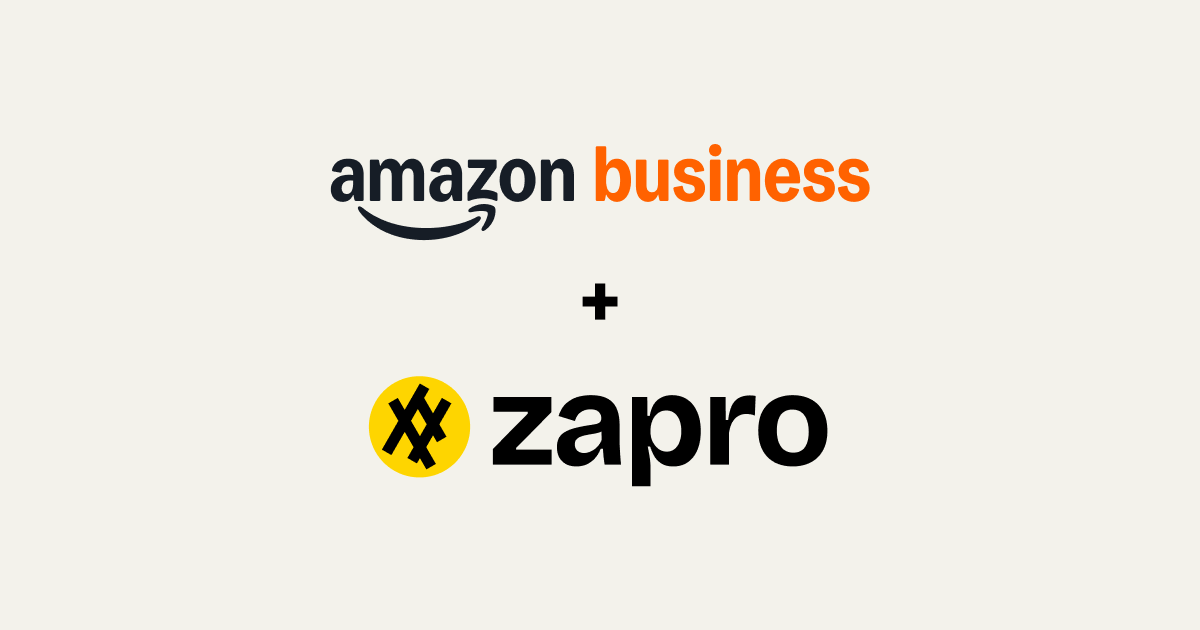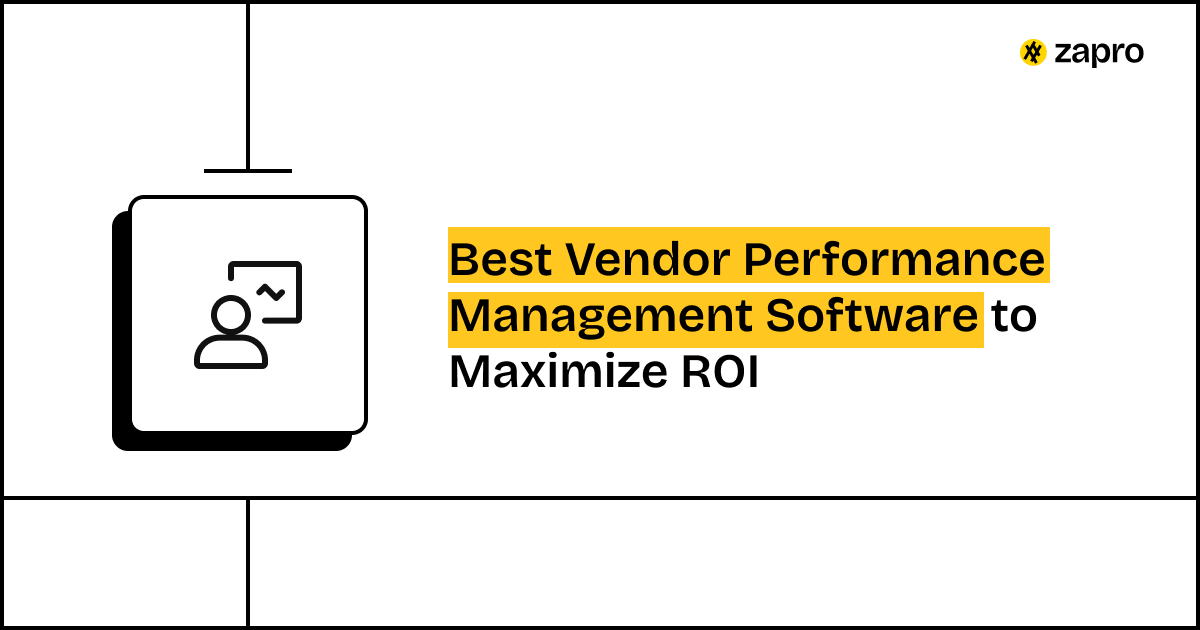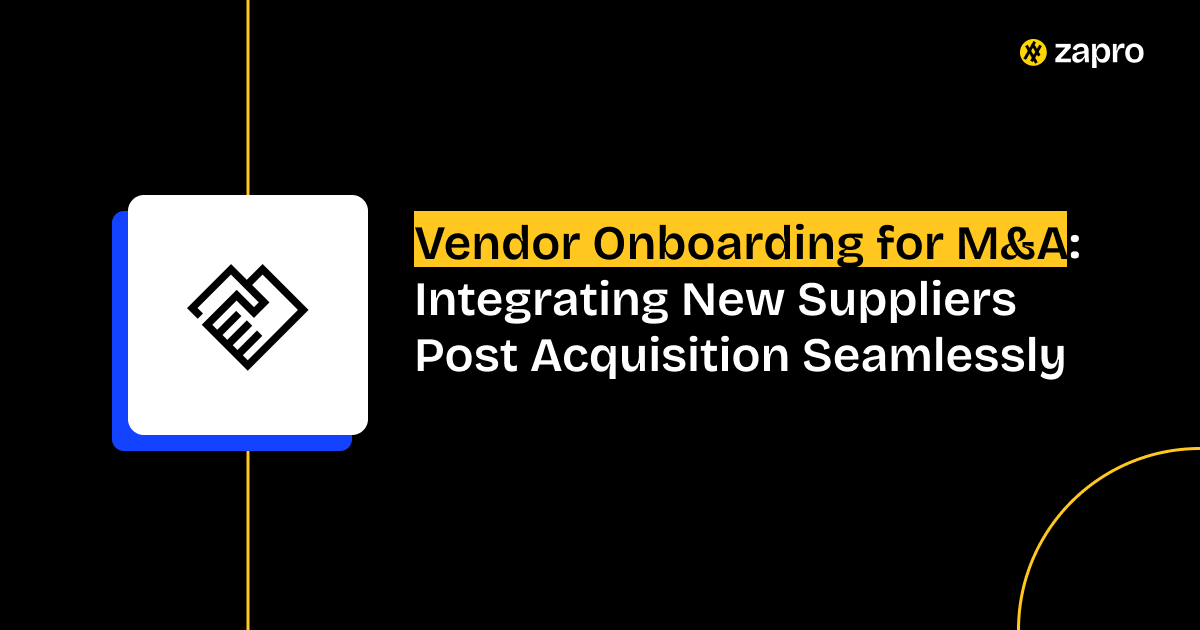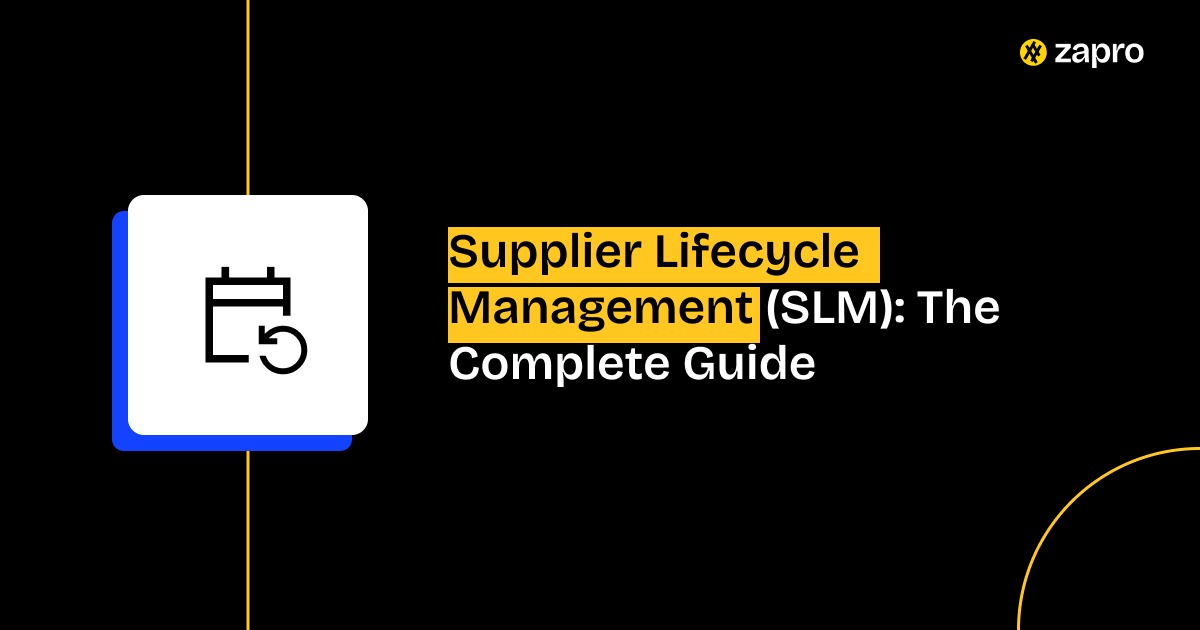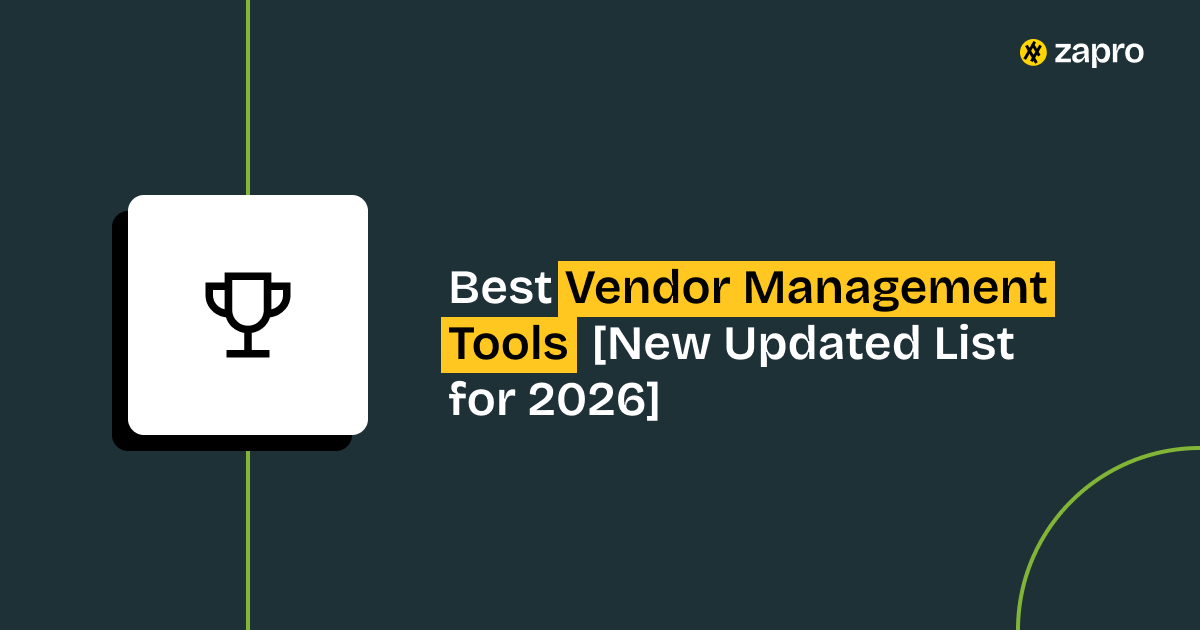Vendor Management is the futuristic step that a business can take to stay successful. It is not just keeping contracts in order. Beyond maintaining contracts, Vendor Management is the crucial approach to staying compliant, growing value, and propelling the business in the right direction. That’s where vendor performance management tools come into play. The best tool helps track supplier performance, circumnavigate risks, take bold decisions for the procurement teams.
Do you know why even in 2025 procurement teams face common challenges such as inefficiency, missed deadlines, lack of visibility into vendor performance, and even financial or compliance risks?
There is a dire need to pick the right Vendor Management Software that aligns with your business goals. A wrong software can lead to escalating issues, strained supplier relationships and higher operational costs. Go for the right vendor management tool that gives you a structured approach which is essential for building strong and reliable partnerships.
What Are Vendor Performance Management Tools?
Vendor performance management tools are software platforms that help procurement teams to evaluate, monitor, and optimize how vendors deliver against agreed standards. Some procurement tools are good enough to handle transactions, but the powerhouse systems will help track everything from delivery times and service quality to compliance with contractual obligations.
These are often called vendor management systems. They are ideal for onboarding vendors, contracts, and payments. However, while a vendor management system focuses more on processes and documentation, vendor performance management tools dive deeper into vendor performance assessment by providing real-time insights and metrics.
In simple terms, beyond maintaining the contracts these tools give you an edge to provide a complete framework for businesses to understand whether their suppliers are helping or holding them back.
Benefits of Vendor Performance Management Tools
Vendor performance management tools offer the benefit of the improvement in supplier transparency and accountability which is the need of the hour. The clarity of the process not only helps in performance tracking, but also allows suppliers to know that they’re being evaluated, which often leads to better service quality and reliability.
Besides that, businesses can also streamline performance assessment. The centralized dashboards that show vendor KPIs in real time eliminate the need for relying on spreadsheets or fragmented reports, procurement teams can access details hassle-free. This eases the review process and helps managers identify patterns before it’s late.
The last thing that these tools do is to assist the companies in lowering the risks and dealing with compliance in a simple way. They flag potential problems which may lead to the company not fulfilling the SLA or breaking the rules. As a result, the organization can intervene early and prevent the problem from becoming a catastrophe. Moreover, the data gathered provides the basis for decisions that are more rational and, therefore, guaranteeing that any relations and agreements held in the future will have been founded on a reliable basis rather than merely assumed.

Organizations today are two times more likely to achieve high performance when they leverage external data from suppliers to feed their decisions.
– Gartner
Top Vendor Performance Management Tools in 2025
The demand for vendor management software keeps expanding, and both the traditional and the new players are delivering creative solutions. Here are the details of the top vendor performance management tools in 2025 with the unique features of each platform.
| Tool | Key Strengths | Best For |
| Zapro | Blends procurement and supplier performance into an intelligent one platform with AI-driven insights. | Businesses seeking a single, integrated solution. |
| SAP Ariba | Strong global network with solid compliance and contract administration functionalities. | Large enterprises with complex supply chains. |
| Coupa | Concentrate on the visibility of expenditure, the collaboration with the suppliers, and the management of risks. | Companies prioritizing cost control and efficiency. |
| Oracle Procurement Cloud | Thorough integration with ERP systems and the use of advanced analytics. | Enterprises are already using Oracle solutions. |
| Jaggaer | Characterized by the management of the supplier lifecycle and the use of analytics | Organizations with diverse vendor networks. |
| GEP SMART | AI-enabled insights, consolidated procurement platform, and user-friendly design. | Businesses looking for modern, scalable solutions. |
| Ivalua | Significant customization options with the complete vendor lifecycle. | Companies that need flexibility and tailored workflows. |
| ProcurementExpress.com | Easy-to-use and intuitive interface with fast onboarding and budget management features. | Small to mid-sized businesses seeking affordability and ease of use. |
| Precoro | Automates procurement workflows with real-time vendor performance tracking. | Teams focused on efficiency and automation. |
| Kissflow Procurement Cloud | Cloud-based platform with strong workflow automation and integration options. | Businesses moving toward digital-first procurement strategies. |
Essential Features of Top Vendor Risk Management Platforms
Despite the fact that every platform has its own advantages, the most successful ones have a common feature set in which a centralized vendor database is really the core—the database, in that way, enables all teams to have vendor information from just one source of truth, thus, less duplication and confusion.
Another feature that is equally vital to the success of the whole system is real-time performance tracking and alerts. In other words, this enables the early detection of any underperformance or compliance issue, thus, a situation leading to unnecessarily costly delays avoided. On top of that, automated compliance checks can be enterprises’ allies in achieving the financial, legal, and data security requirements without having to conduct countless manual reviews.
Furthermore, top-tier solutions can offer risk scoring and vendor classification that not only simplify the process of determining which suppliers are the most important but also lower the chances of facing unanticipated problems. Moreover, even though it is helpful to have a good procurement and ERP system in place as it makes the workflow frictionless, it is the AI-driven insights and predictive analysis that put the enterprise in a position to be the market leader by charting the future rather than merely reacting to the past.
Your Key to Seamless Vendor Success

Vendor Performance Management Best Practices
Organisations need a solid vendor performance management framework to fully exploit these tools. Defining success in a tangible way with deliverables such as on-time delivery, quality standards, compliance, and even innovation, is the starting point of this exercise.
Another best practice is to automate reporting and feedback loops. Frequent performance reports keep both internal teams and suppliers updated, while automated reminders ensure that reviews take place regularly. Regular performance reviews also become collaboration opportunities which help vendors find areas for improvement.
Moreover, enterprises are required to integrate IT vendor performance management tools as a segment of their procurement plan. Since most vendors are technology-driven, businesses that use IT performance monitoring systems can stay ahead of the competition, as they can prevent unanticipated breakdowns and ensure their digital resilience.
Learn about Vendor Business Reviews.
Why Zapro Stands Out
Among all the available solutions, Zapro is gaining attention as one of the most innovative vendor performance management platforms in 2025. Unlike traditional systems that separate procurement from performance tracking, Zapro unites both functions on a single intelligent platform. This means procurement teams no longer have to jump between different tools to get a complete picture.
Onboarding with Zapro is also remarkably smooth. This platform fits seamlessly into your current work processes, which means less time needed for the arrangement and a minimal disturbance in your flow. Its AI-led insights distinguish it from the other enterprise performance management vendors, giving it the capability to offer predictive analytics that allow companies to be proactive towards supplier risks.
Above all, Zapro aims to establish better supplier relationships that last a long time. The company can capitalize on growth instead of merely engaging in transactional activities, as the platform, through openness, involvement, and useful data, provides the tools to do so.
Learn more about Deel Alternative.
Conclusion
In 2025, the companies that will succeed will not only be vendor managers but will also be partnering them for their mutual long-term benefit. This is the main reason why vendor performance management tools are becoming an indispensable part of the procurement strategies of the present day. They are the ones that provide the necessary visibility, accountability, and intelligence that help in minimizing the risks and unlocking the supplier value.
Although many platforms are robust in their features, Zapro distinguishes itself as the solution that is ready for the future and can cater to any business size. It is the one that makes procurement easy, performance tracking a seamless process, and AI as a tool to provide the insights that bring real outcomes.

Get Started with Zapro Today
Simplify vendor performance management and unlock smarter, faster ROI-driven decisions.
FAQs
1. What is vendor performance management?
Vendor performance management refers to the activities that include evaluation and checking on the supplies delivered by suppliers against contracts, KPIs, and compliance standards. The main idea here is to ensure that vendors are in line with business goals and offer constant value.
2. How do vendor performance management tools differ from vendor management systems?
A vendor management system is primarily focused on managing onboarding, contracts, and payments, whereas vendor performance management tools are more focused on vendor performance assessment. They monitor quality, delivery, compliance, and risk, thus offering the necessary information to develop supplier relationships.
3. Why are IT vendor performance management tools important?
The IT vendors form the digital infrastructure critical for the functioning of different systems. Thus, poor performance of IT vendors may lead to system downtime or security risks. Hence, specialized tools are there to ensure that IT vendors meet performance and compliance standards.
4. What are vendor performance management best practices?
The vendor performance management best practices involve defining clear KPIs, automating reporting, conducting regular reviews, and incorporating performance monitoring into current procurement systems. Such activities enable enterprises to establish more robust supplier relationships.
Don’t miss our weekly updates
We’ll email you 1-3 times per week—and never share your information.
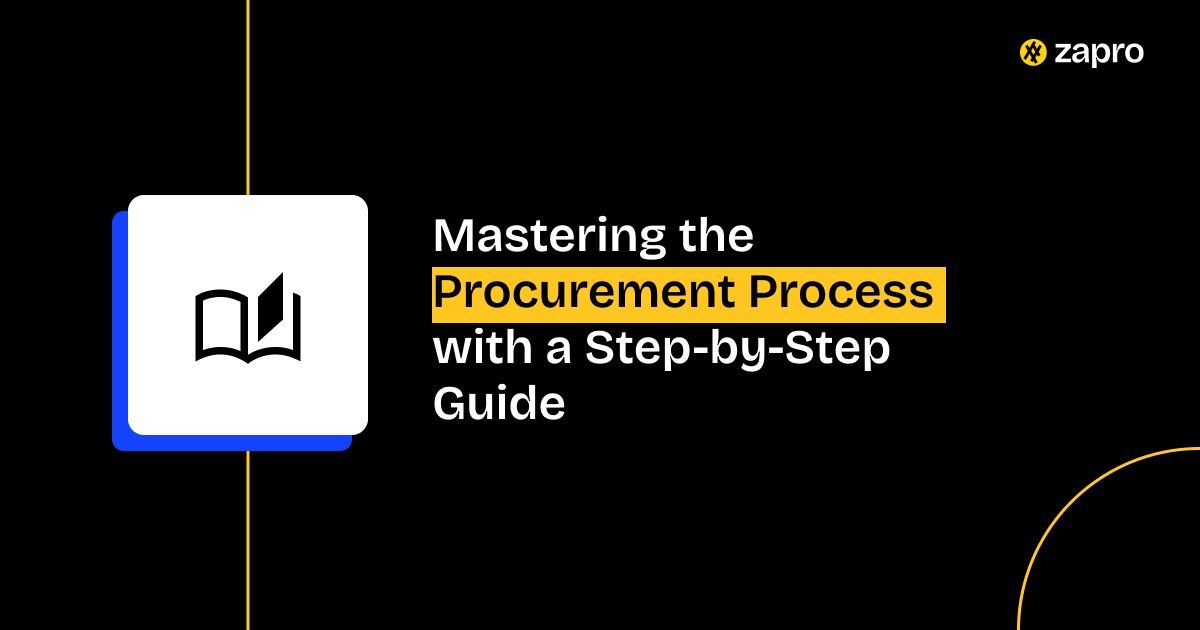
 Healthcare
Healthcare Financial Services
Financial Services Technology
Technology Venture Capitalist
Venture Capitalist Chief Procurement Officer
Chief Procurement Officer Chief Financial Officer
Chief Financial Officer